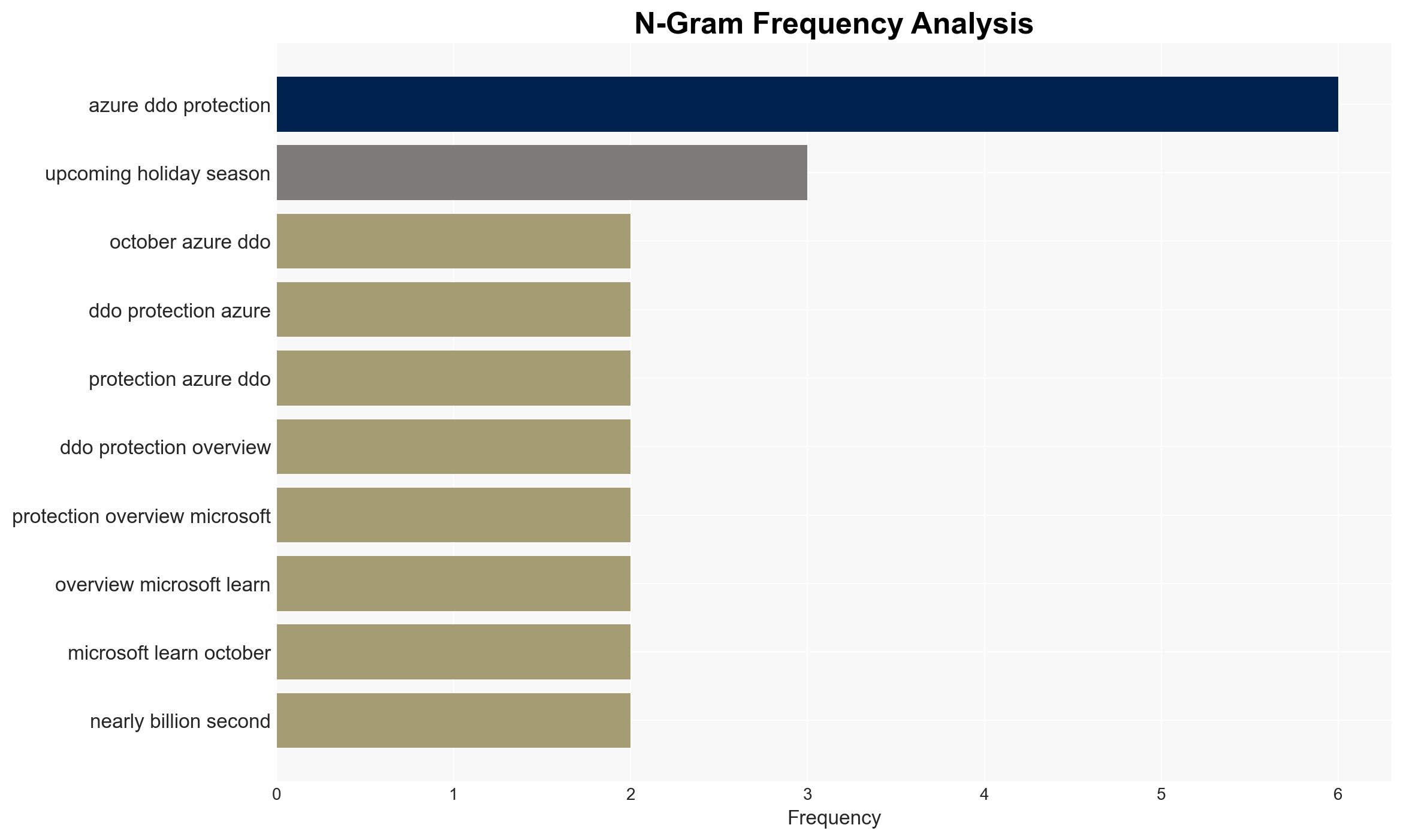Azure hit by 15 Tbps DDoS attack using 500k IP addresses – Microsoft.com
Published on: 2025-11-17
AI-powered OSINT brief from verified open sources. Automated NLP signal extraction with human verification. See our Methodology and Why WorldWideWatchers.
Intelligence Report:
1. BLUF (Bottom Line Up Front)
The recent 15 Tbps DDoS attack on Azure, leveraging over 500,000 IP addresses, likely stems from the Aisuru botnet, exploiting IoT vulnerabilities. The most supported hypothesis is that this attack was a demonstration of capability rather than a targeted disruption, with a medium confidence level due to the lack of direct attribution and potential for deception. Immediate strategic recommendations include enhancing IoT security protocols and conducting regular DDoS simulations to ensure readiness.
2. Competing Hypotheses
Hypothesis 1: The attack was a demonstration of capability by a cybercriminal group to showcase their power and attract potential clients or partners.
Hypothesis 2: The attack was a state-sponsored operation aimed at testing Azure’s defenses and gathering intelligence on its DDoS mitigation capabilities.
Hypothesis 1 is more likely due to the use of a known botnet (Aisuru), which is typically associated with criminal activities rather than state-sponsored actions. Additionally, the timing before the holiday season suggests an intent to demonstrate capability rather than a strategic geopolitical move.
3. Key Assumptions and Red Flags
Assumptions: It is assumed that the Aisuru botnet was responsible based on the attack’s characteristics. It is also assumed that the attack was not specifically targeting Azure’s operational capabilities but rather demonstrating the botnet’s power.
Red Flags: The sudden increase in attack size and sophistication could indicate a new actor or a significant evolution in the botnet’s capabilities. The lack of immediate claims of responsibility could suggest an attempt to obfuscate the true origin or purpose of the attack.
4. Implications and Strategic Risks
The attack underscores the growing threat of IoT-based DDoS attacks, which can disrupt critical cloud services. If such attacks become more frequent or sophisticated, they could lead to significant economic losses and undermine trust in cloud service providers. There is also a risk of escalation if state actors are involved, potentially leading to retaliatory cyber operations.
5. Recommendations and Outlook
- Enhance security protocols for IoT devices to prevent exploitation by botnets.
- Conduct regular DDoS simulations to assess and improve defensive capabilities.
- Monitor for any claims of responsibility or further attacks to better understand the threat landscape.
- Best-case scenario: The attack remains an isolated incident with no further escalation.
- Worst-case scenario: Increased frequency and sophistication of attacks leading to widespread service disruptions.
- Most-likely scenario: Continued sporadic attacks as cybercriminals test and refine their capabilities.
6. Key Individuals and Entities
No specific individuals are identified in the attack. Key entities include Microsoft Azure and the operators of the Aisuru botnet.
7. Thematic Tags
Cybersecurity, IoT, DDoS, Cloud Services, Botnet
Structured Analytic Techniques Applied
- Adversarial Threat Simulation: Model and simulate actions of cyber adversaries to anticipate vulnerabilities and improve resilience.
- Indicators Development: Detect and monitor behavioral or technical anomalies across systems for early threat detection.
- Bayesian Scenario Modeling: Quantify uncertainty and predict cyberattack pathways using probabilistic inference.
Explore more:
Cybersecurity Briefs ·
Daily Summary ·
Support us
·





